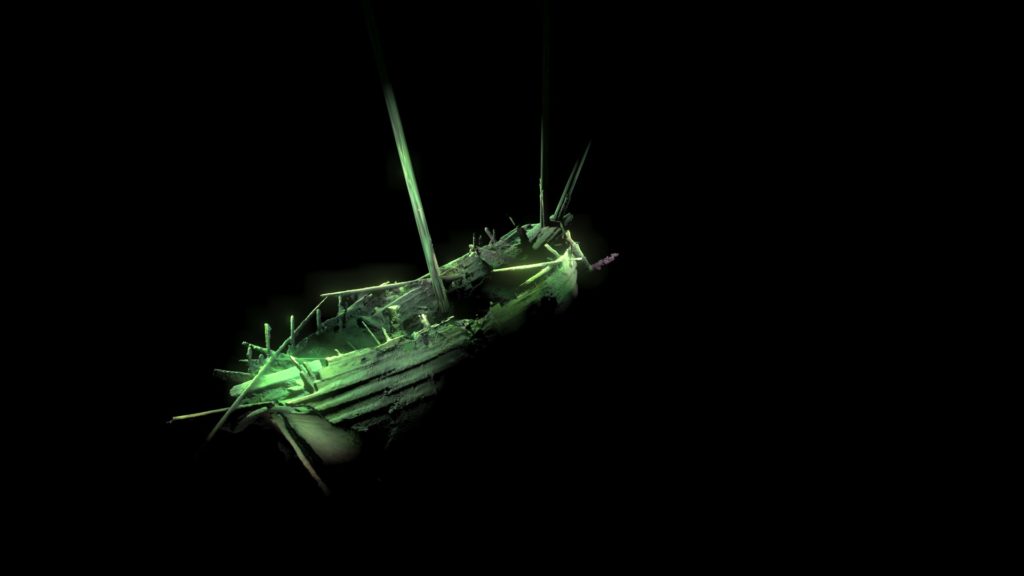Discovery of an intact Renaissance shipwreck in the Baltic Sea
An international team of scientists have discovered the remains of a pristine Early Modern Period (Late 15th Century-Early 16th Century) shipwreck in the Baltic Sea using state-of-the-art underwater robotics. This is a very important discovery as it is exceptionally rare to find ships that predates the larger and more powerful ships later in history.

The archaeological discovery and further photogrammetric survey was led by Dr Rodrigo Pacheco-Ruiz, MMT’s maritime archaeologist and deep sea archaeological expert, in collaboration with Deep Sea Productions owned by Carl Douglas, the Maritime Archaeology Research Institute of Södertörn University (MARIS) and the Centre for Maritime Archaeology (CMA) University of Southampton, where he is a Visiting Fellow in Maritime Archaeology.
The shipwreck was first detected by the Swedish Maritime Administration (SMA) as a side-scan sonar target in 2009, but it was early this year and as part of the Nord Stream 2 survey work carried out by MMT, that the shipwreck was identified as to have great archaeological and historical significance. Being contemporary of the times of Christopher Columbus and Leonardo Da Vinci with an astonishing level of preservation after five hundred years.
The successful partnership between MMT and the University of Southampton has been showcased in the recent discovery and archaeological survey of more than 65 perfectly preserved shipwrecks in the Black Sea, some dating back to Ottoman, Byzantine Roman and Greek periods and to depths of more than 2,000m – a testament of the rich collaboration between industry and academic research.
MMT welcomed students of Maritime Archaeology from the University of Southampton as well as students developing Artificial Intelligence (AI) for subsea robotics from KTH Royal Institute of Technology in Stockholm (KTH) to join the Baltic expedition team on-board Stril Explorer receiving thus training in deep sea archaeological methods and techniques – a key component in the partnership between these two institutions.



From the archaeological survey it is believed that the shipwreck could date between the Late 15th Century and the Early 16th Century. Placing the site to be earlier than the Warship Mars, which sunk after an explosion in the First Battle of Öland in 1564 and Henry the VIII’s Mary Rose (1510-1545 AD) as well as The Swedish Warship Vasa (1628 AD).
This is a very important discovery as it is rare to find ships that predates the larger and more powerful ships involved later in the Northern Seven Year’s Wars (1563-1570) in such astonishing conditions. A period of great importance which defined the path of modernisation of these Scandinavian nations.
Contrary to the scattered remains of the Warship Mars, which exploded in battle, this newly discovered shipwreck lays intact in the bottom of the Baltic’s seabed. Her hull structure is preserved from the keel to the top deck with all of her masts and some elements of the standing rigging still in place, including the bowsprit and a rudimentary decorated transom stern and other elements of the ship rarely ever seen such as the wooden capstan in place and bilge pump. Still on the main deck, an incredible and rare find, the ship’s tender boat, used to ferry crew to and from the ship and leaning against the main mast. A testament of the tension on human relationships of the time are the swivel guns, which are still in place on the gun deck.
The shipwreck can be described as very similar to the depictions of the The Gribshunden (Figure 9) shipwreck also found in Sweden, and dating to the late 14th Century early 15th Century and which remains are very scant.
This Unknown Ship (Okänt Skepp) is probably the best preserved Early Modern Period shipwreck ever to be discovered in recent times.

